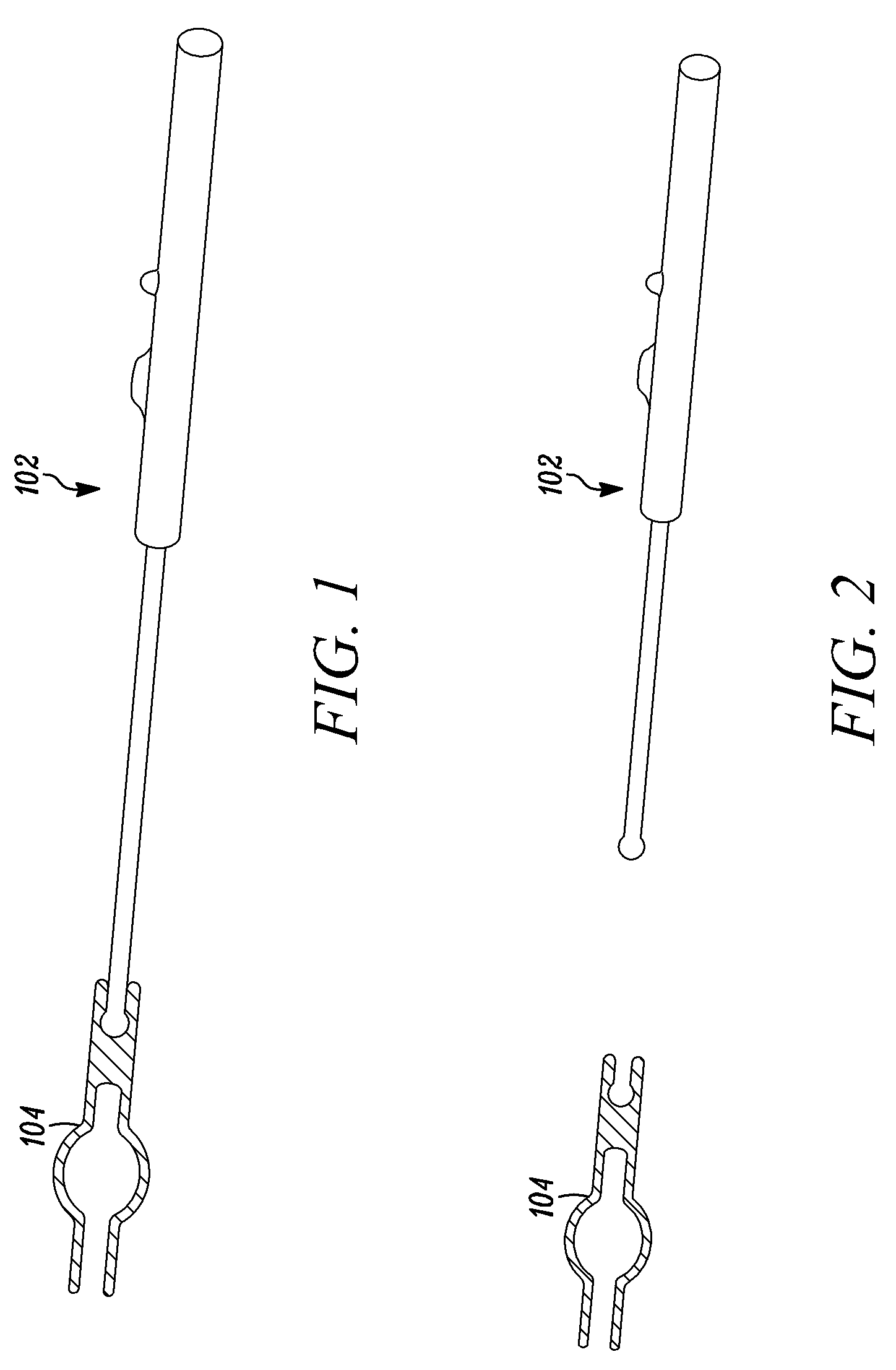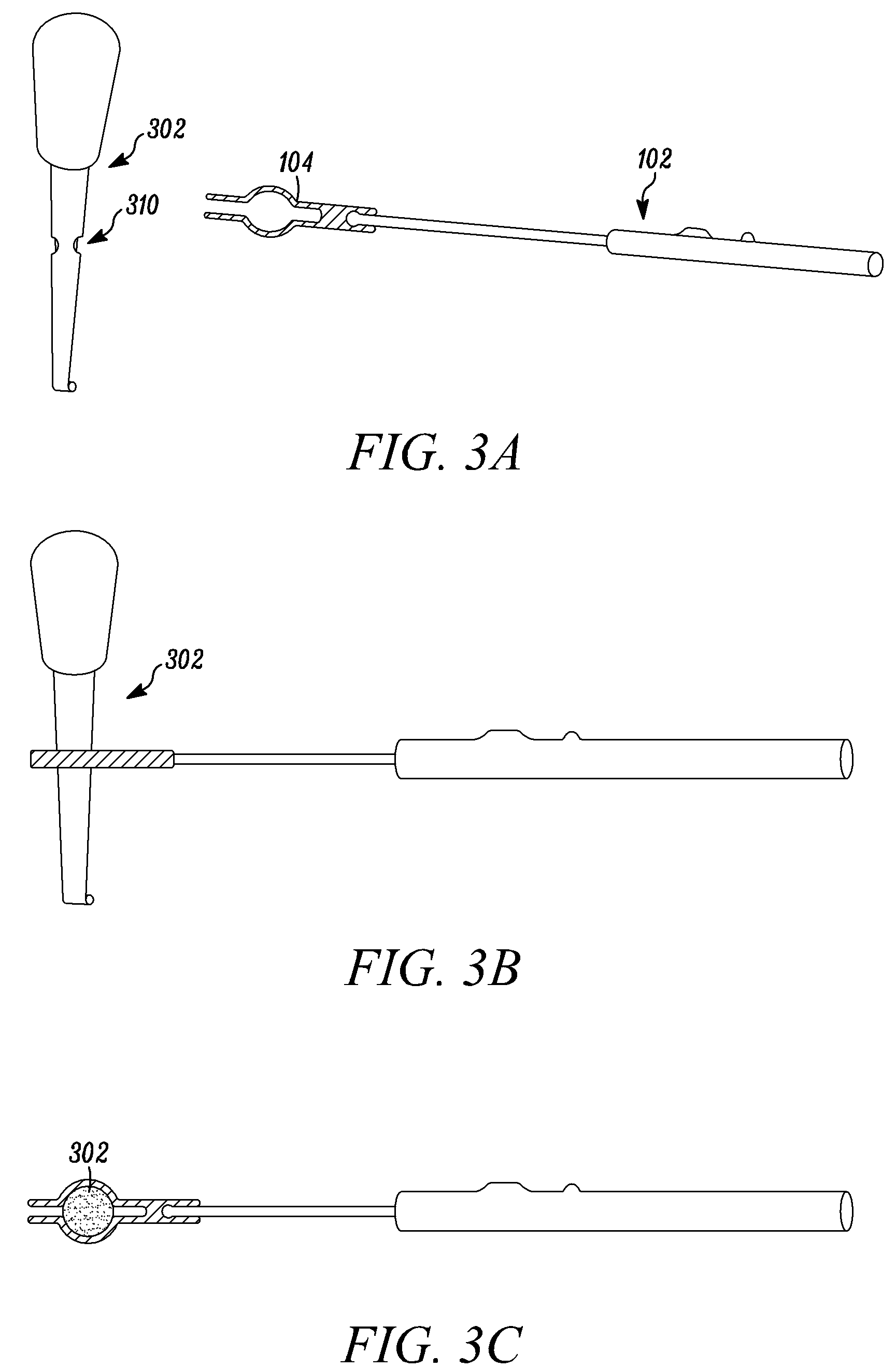Neurophysiological apparatus and procedures
a technology of neurophysiological apparatus and procedures, applied in the field of neurophysiological techniques, can solve the problems of false negative values, misplaced pedicle screws, injury to nerves and blood vessels surrounding vertebrae, etc., and achieve the effect of improving neurophysiological techniques and preventing nerve damag
- Summary
- Abstract
- Description
- Claims
- Application Information
AI Technical Summary
Benefits of technology
Problems solved by technology
Method used
Image
Examples
Embodiment Construction
[0080]FIG. 1 is a lateral view of the side of the current probe 102 and a novel clip 104 according to this invention. One end of the clip snaps around instruments. The second end of the clip snaps over the tip of the probe. Alternatively, a second probe tip could be manufactured that incorporates the novel tip end. FIG. 2 is a detached view of the probe and tip of FIG. 1.
[0081]FIG. 3A is a lateral view of a curette 302 used to “sound” the pedicle and the probe 102 with a clip attachment 104. The shaft of the instrument 302 may be machined with a groove 310 to cooperate with the clip. FIG. 3B is a lateral view of the probe of FIG. 1 attached to the curette of FIG. 3A. FIG. 3C is a cross section.
[0082]FIG. 4 is a lateral view of an alternative embodiment, wherein the shaft of the 20 tap has a raised portion 402 to cooperate with a clip 404. The raised portion 402 avoids the stress riser created by a groove in the shaft. FIG. 5 is a lateral view of the embodiment of the instrument draw...
PUM
 Login to View More
Login to View More Abstract
Description
Claims
Application Information
 Login to View More
Login to View More - R&D
- Intellectual Property
- Life Sciences
- Materials
- Tech Scout
- Unparalleled Data Quality
- Higher Quality Content
- 60% Fewer Hallucinations
Browse by: Latest US Patents, China's latest patents, Technical Efficacy Thesaurus, Application Domain, Technology Topic, Popular Technical Reports.
© 2025 PatSnap. All rights reserved.Legal|Privacy policy|Modern Slavery Act Transparency Statement|Sitemap|About US| Contact US: help@patsnap.com



